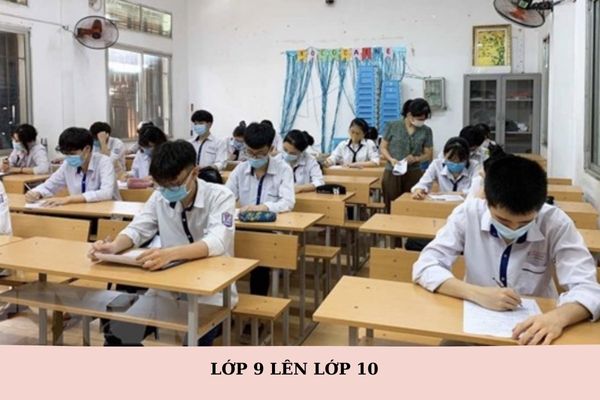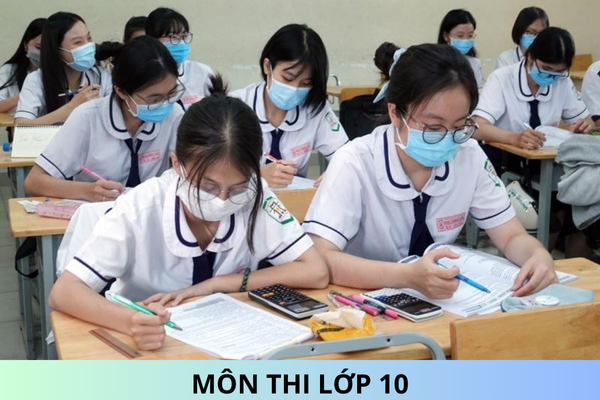What are the content and requirements of knowledge of chemistry on Hydrocarbon in the high school curriculum in Vietnam?
What are the content and requirements of knowledge of chemistry on Hydrocarbon in the high school curriculum in Vietnam? What are the content and requirements of knowledge of chemistry on Alcohol - Phenol in the high school curriculum in Vietnam? What are the content and requirements of knowledge of chemistry on carbonyl compounds (Aldehyde - Ketone) - Carboxylic acid in the high school curriculum in Vietnam?
Thank you!
What are the content and requirements of knowledge of chemistry on Hydrocarbon in the high school curriculum in Vietnam?
Pursuant to Appendix I, the volume of knowledge of chemistry promulgated together with Circular 15/2022/TT-BGDĐT (takes effect from 24/12/2022) stipulating the content and requirements of knowledge of chemistry on Hydrocarbon in the high school curriculum in Vietnam as follows:
|
No. |
Content |
Requirements to be met |
|
|
12 |
Hydrocarbons |
Alkanes |
- State the concept of alkane, the source of alkane in nature, the general formula of alkane. - Present rules for naming according to alternative nomenclature; apply names to some unbranched alkanes (C1 - C6) and some branched chain alkanes containing no more than 5 C atoms. - Present the physical properties (melting temperature, boiling point, density, solubility) of some alkane (C1-C6). - Describe the characteristics of chemical bonds in alkane molecules; substitution reaction (bromine), cracking, combustion reaction of hexane. - Conduct experiments on hexane interaction with bromine water at room temperature and when heated, hexane is ignited; Observe, describe experimental phenomena and explain the chemical properties of hexane. - State the applications of alkane in practice and how to prepare alkane in industry. - State that one of the causes of air pollution is due to substances in the exhaust gases of vehicles; Understand and implement a number of measures to limit environmental pollution caused by means of transport. |
|
Unsaturated hydrocarbons |
- State the concept of alkene and alkyne, the general formula of alkene; bonding characteristics in ethylene and acetylene molecules. - Name some alkene, simple alkyne (C2 - C5), common name a few common alkene, alkyne. - State the physical properties (melting temperature, boiling point, density, solubility in water) of some alkenes (C2-C5) and acetylene. - Present the chemical properties of ethylene and acetylene: Reaction of adding hydrogen, adding halogen (bromine); addition of hydrogen halide (HBr) and addition of water; polymerization of ethylene; Reaction of acetylene with AgNO 3 solution in NH 3 ; Oxidation reaction (burning reaction of alkene, acetylene). - State the reaction to decolorize the violet dye of alkene - Conduct experiments on the preparation and testing of properties of ethylene and acetylene (combustion reaction, reaction with bromine water, reaction to decolorize potassium permanganate); describe experimental phenomena and explain the chemical properties of ethylene and acetylene. - Present the application of ethylene and acetylene in practice; methods for the preparation of alkene, acetylene in the laboratory (dehydration of ethyl alcohol to prepare alkene, from calcium carbide to produce acetylene) and in industry (crack reaction to prepare ethylene, to prepare acetylene from methane). |
||
What are the content and requirements of knowledge of chemistry on Alcohol - Phenol in the high school curriculum in Vietnam?
Pursuant to Appendix I, the volume of knowledge of chemistry promulgated together with Circular 15/2022/TT-BGDĐT (takes effect from 24/12/2022) stipulating the content and requirements of knowledge of chemistry on Alcohol - Phenol in the high school curriculum in Vietnam as follows:
| No. |
Content |
Requirements to be met |
|
|
13 |
Alcohol - Phenol |
Alcohol |
- State the concept of alcohol; general formula of saturated, monofunctional, open-chain alcohol; concept of alcohol order. - Write structural formulas, name them by substituting nomenclature for some simple alcohols (C1 - C5), common names for some common alcohols. - Describe the physical properties of alcohol (state, tendency of boiling point, solubility in water). - State the chemical properties of ethylic alcohol: Reaction with Na; The reaction forms ethylene or ether; Oxidation reaction to aldehyde; Combustion reaction. - Perform ethanol combustion experiments; describe experimental phenomena and explain the chemical properties of ethylic alcohol. - Present the application of ethylic alcohol, the harmful effects of alcohol abuse and alcoholic beverages; State the individual's attitude and behavior in protecting the health of himself, his family and the community. - Present the method of preparing ethanol by ethylene hydration method, starch fermentation. |
|
Phenol |
- State the concept of phenol, names, structural formulas of some simple phenols, structural characteristics of phenol. - State the physical properties (state, melting point, water solubility) of phenol. - Present the basic chemical properties of phenol : Reaction with sodium hydroxide), substitution reaction in the aromatic ring (reaction with bromine water, with concentrated HNO3 in concentrated H2SO4 ). - Perform (or watch video, or describe) experiments of phenol with sodium hydroxide, with bromine water, with concentrated HNO3 in concentrated H2SO4 ; Describe the experimental phenomenon and explain the chemical properties of phenol. - Describe the applications of phenol - Preparation of phenol (from cumene and from coal tar). |
||
What are the content and requirements of knowledge of chemistry on carbonyl compounds (Aldehyde - Ketone) - Carboxylic acid in the high school curriculum in Vietnam?
Pursuant to Appendix I, the volume of knowledge of chemistry promulgated together with Circular 15/2022/TT-BGDĐT (takes effect from 24/12/2022) stipulating the content and requirements of knowledge of chemistry on carbonyl compounds (Aldehyde - Ketone) - Carboxylic acid in Vietnam as follows:
|
No. |
Content |
Requirements to be met |
|
|
14 |
Carbonyl compounds (Aldehyde - Ketone) - Carboxylic acid |
Carbonyl compounds |
- State the concept of carbonyl compounds (aldehydes and ketones). - Name by substitution nomenclature for some simple carbonyl compounds (C1 - C5); Common names for several common carbonyl compounds. - Describe the bonding characteristics of the carbonyl functional group. - State the physical properties (state, boiling point, solubility) of carbonyl compounds. - State the chemical properties of formaldehyde and acetone: Reduction reaction (with NaBH4 or LiAlH 4 ); Oxidation of aldehydes (Tollens reagent). - Perform (or observe via video) experiments: reaction with Tollens reagent; Describe the experimental phenomenon, explain the chemical properties of carbonyl compounds. - Describe the applications of acetaldehyde and acetone compounds; method for the preparation of acetaldehyde by oxidation of ethylene. Note: The reduction reaction of carbonyl compounds with LiAlH4 or NaBH4 is only written in schematic form: R-CO-R' + [H] → R-CH(OH)-R' - Prepare acetone from cumene. |
|
Carboxylic acid |
- Explain the concept of carboxylic acids. - Write structural formulas and name some acids by alternative nomenclature (C1 - C5) and some common acids by common names. - Describe the structure of acetic acid molecules. - State the physical properties (state, boiling point, solubility) of carboxylic acids. - Present the basic chemical properties of acetic acid: Show acidity (React with indicator, react with metal, metal oxide, base, salt) and esterification reaction. - Conduct experiments on the reaction of acetic acid with red litmus, sodium carbonate (or calcium carbonate), magnesium; prepare ethyl acetate (or observe through experimental video); Describe experimental phenomena and explain the chemical properties of acetic acid. - Present the application and preparation method of acetic acid (preparation of acetic acid by vinegar fermentation and butane oxidation reaction). |
||
Best regards!











